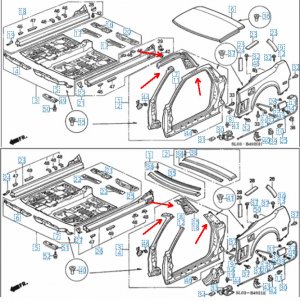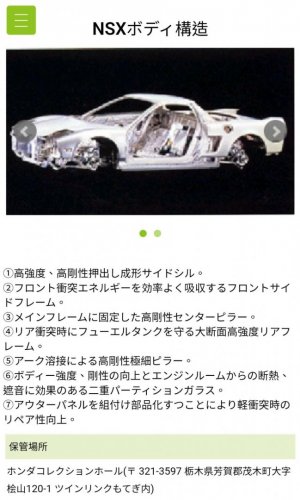This is certainly a topic of much debate over the years. I think I believed both sides at some point, but here is why I now believe the 1997 coupes do not have most of the targa reinforcements like the frame rails and etc.
The coupe and targa have different part numbers for frame rails in the parts catalog.
1999 Targa L side sill -
65190-SL0-T11ZZ
1999 Base L side sill -
65190-SL0-A02ZZ
1996 Targa L side sill -
65190-SL0-T10ZZ
1996 Base L side sill -
65190-SL0-A01ZZ
I think we've all seen the photos of the frame rail that shows how much more material the targa has. The targa rails should weight significantly more. I will get back to the weight debate later though.
The A and B-Pillars are different as well. The parts diagram shows that the roof line is part of the B-Pillar on a coupe and the targa doesn't have a roof. The A-Pillar also has an extra bit of windshield frame on the targa.
View attachment 183828
Note: It's not just the outer A and B pillar, it's also the inner piece that is different.
The 97+ did get lighter exterior body panels to offset the weight of the Targa reinforcements. Both Targa and coupes benefitted from this and the body panels do have the same part numbers.
So **if** the 97+ coupes did get the targa chassis reinforcements wouldn't that mean that the coupes became heavier and the weight difference between a coupe and targa should be smaller? That doesn't seem to be the case though.
1997 -
Source
| Curb Weight | Coupe | NSX-T |
Manual
Automatic | 3069 lbs (1392 kg)
3113 lbs (1412 kg) | 3164lbs (1435kg)
3208lbs (1455kg) |
95lb difference between a coupe and targa
1996 -
Source
| Curb Weight | Coupe | Open Top |
Manual
Automatic | 3047lbs(1382kg)
3113lbs(1412kg) | 3142 lbs (1425kg)
3208 lbs(1455 kg) |
Same 95lb difference between a coupe and targa
Well maybe the 95/96 coupes also got the targa reinforcements?
1994 -
Source
| Curb Weight | Manual: 3020 lbs (1370 kg)
Automatic: 3109 lbs (1410 kg) |
That doesn't seem to be the case either because a 1994 coupe (manual) is only 27lbs lighter than a 1996. That can be explained by the addition of EPS on most manual cars for 1995+. Also if we look at the automatic cars which always had EPS the weight difference is only 4lb (1994 vs 1996).
So that's why I think the 1997+ coupes did not have the targa chassis reinforcements. I think this is similar to the rumor that 2002+ all had NSX-R motors. The belief behind that was also "streamlining the manufacturing process."









